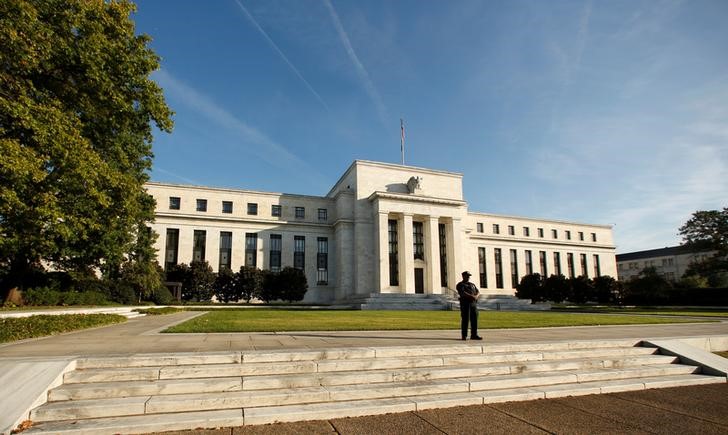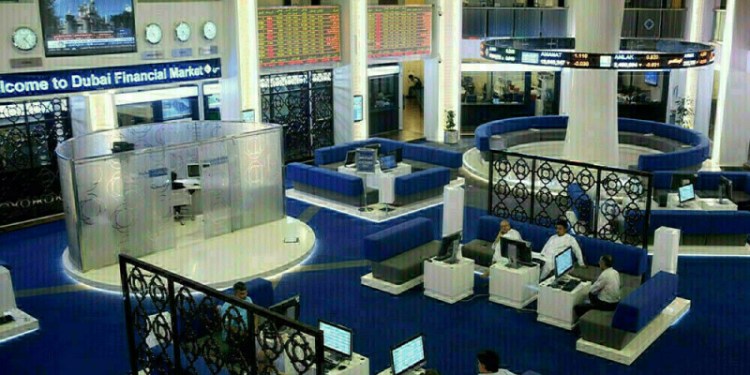 © Reuters. A police officer keeps watch in front of the U.S. Federal Reserve in Washington
© Reuters. A police officer keeps watch in front of the U.S. Federal Reserve in WashingtonBy Lindsay Dunsmuir and Howard Schneider
WASHINGTON (Reuters) – The Federal Reserve held interest rates steady on Wednesday and expressed confidence that a recent rise in inflation to near the U.S. central bank’s target would be sustained, leaving it on track to raise borrowing costs in June.
The Fed’s rate-setting committee also downplayed a recent slowdown in economic and job growth, saying that activity had been expanding at a moderate rate and job gains, on average, had been strong in recent months.
In a statement following the end of a two-day policy meeting, the Fed said inflation had “moved close” to its target and that “on a 12-month basis is expected to run near the Committee’s symmetric 2 percent objective over the medium term.”
The Fed’s decision to leave its benchmark overnight lending rate in a target range of between 1.50 percent and 1.75 percent was unanimous. Investors had all but ruled out another increase at this week’s meeting. The Fed raised rates in March.
Stock markets and bond yields were largely unmoved by the decision.
“From our reading of the statement, it’s particularly bland. Their outlook is roughly balanced,” said John Canavan, market strategist at Stone & McCarthy Research Associates.
The Fed’s overall confidence in the economic outlook was also highlighted by its assertion that business fixed investment had continued to grow strongly. It added that risks to the outlook appear roughly balanced, removing a previous reference to “near-term risks.”
Fed Chairman Jerome Powell has maintained that the central bank will pursue a middle-of-the-road approach to monetary policy, continuing to gradually lift rates in the face of a robust economy that had yet to spark a jump in inflation.
But data released on Monday showed that price gains are now effectively at the Fed’s 2 percent target after years of falling short of that mark.
The Fed’s preferred measure of inflation soared 1.9 percent in the 12 months through March, the biggest increase since February 2017, after increasing 1.6 percent in the year through February, the U.S. Commerce Department reported.
Fed policymakers had anticipated the rise and have stressed that their target is not a ceiling.
EYES ON JUNE MEETING
The central bank currently forecasts another two rate rises this year, although an increasing number of policymakers see three as possible. Investors overwhelmingly expect a rate hike at the Fed’s June 12-13 policy meeting.
The pace of rate increases has picked up since the central bank began its tightening cycle in December 2015. It raised rates once in 2016, but lifted borrowing costs three times last year amid a strengthening economy and labor market.
Although economic growth slowed to an annualized rate of 2.3 percent in the first quarter, a period that has tended to be weaker in recent years, and job gains cooled in March, a pickup is expected in the months ahead, fueled in part by the Trump administration’s tax cuts and fiscal stimulus.
The economy is now in its second-longest expansion since World War Two. The unemployment rate is at a 17-year low of 4.1 percent, below the Fed’s longer-run estimate of what constitutes full employment, and there are signs wages are moving firmly higher after an extended period of sluggishness.
The Fed’s policy statement made no mention of the economic risks posed by mounting trade tensions between the United States and other nations, particularly China. Fed policymakers had flagged the potential negative impact of the conflict in recent public comments, but adopted a wait-and-see attitude.
Source: Investing.com




























